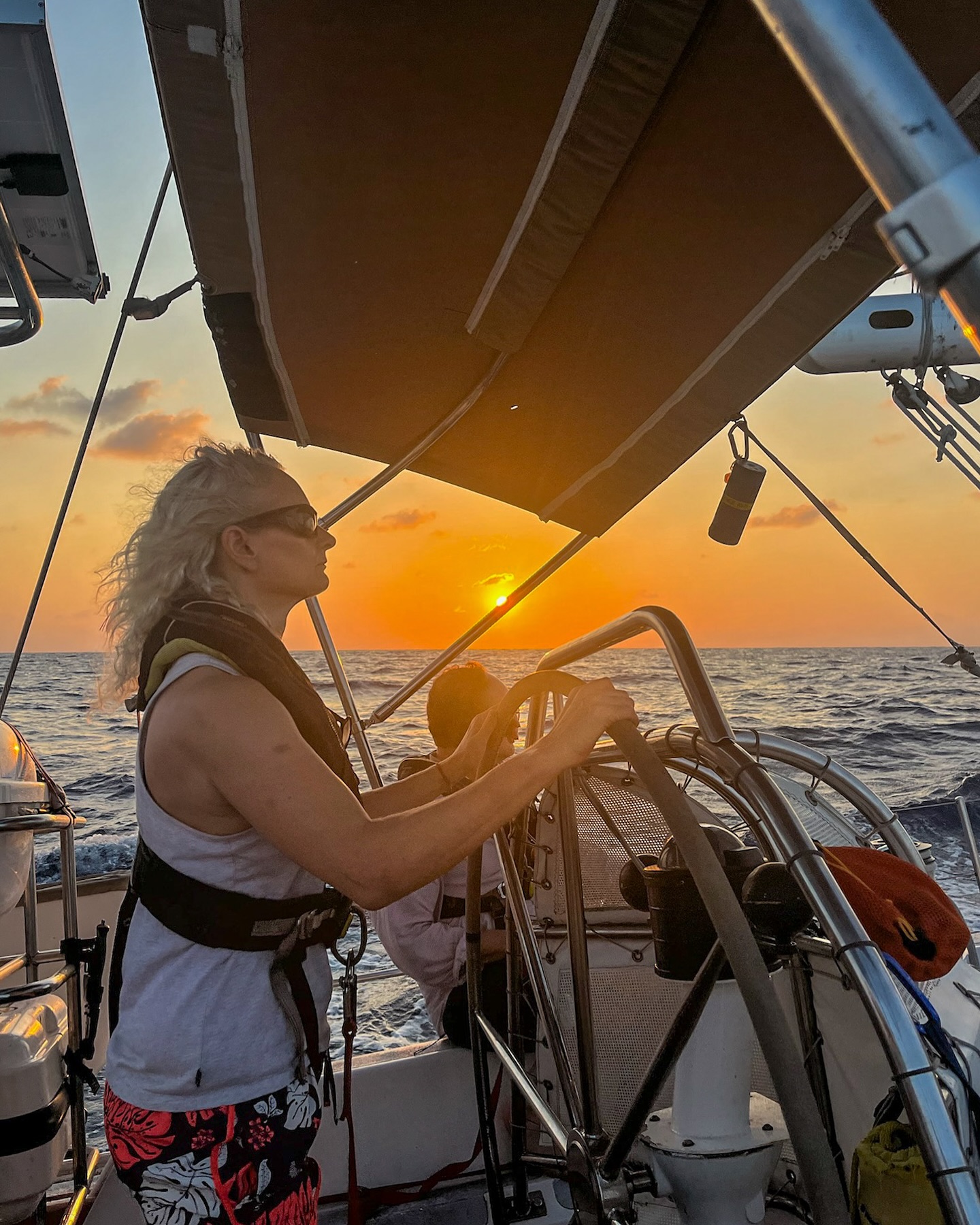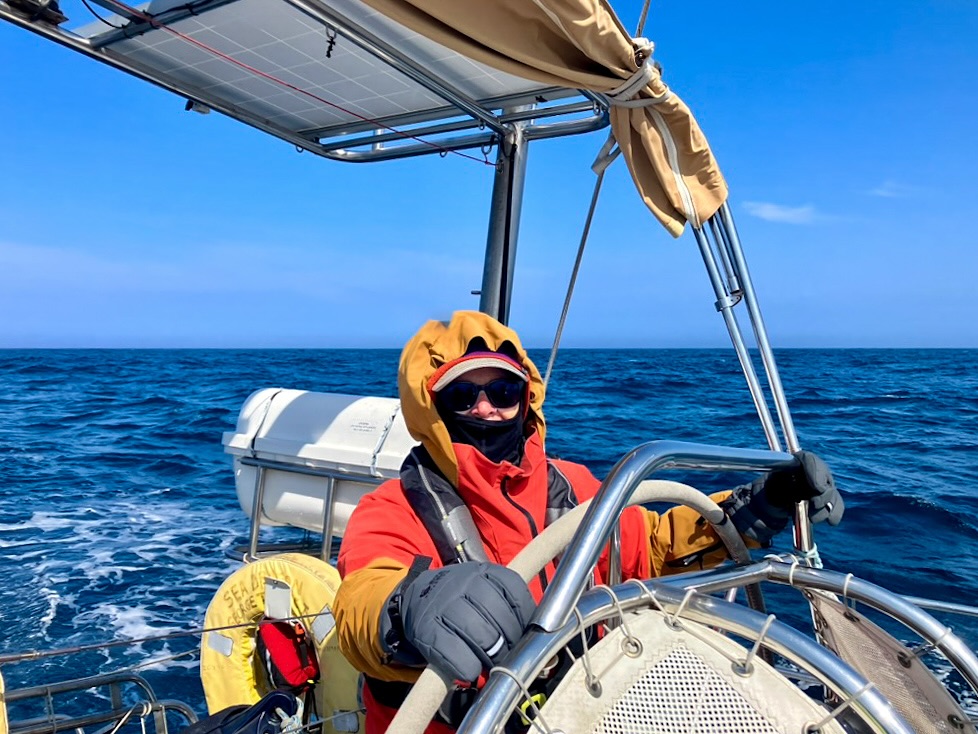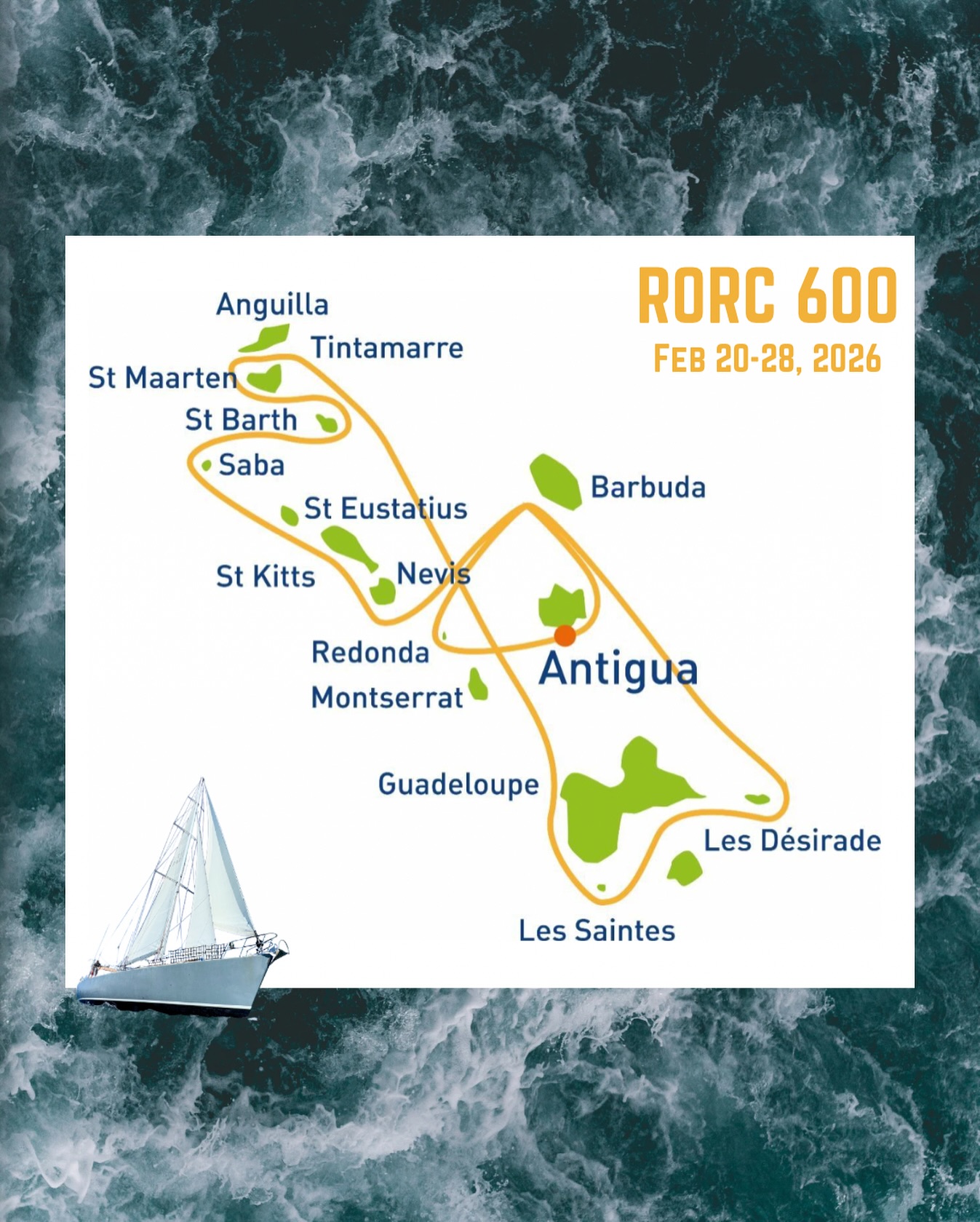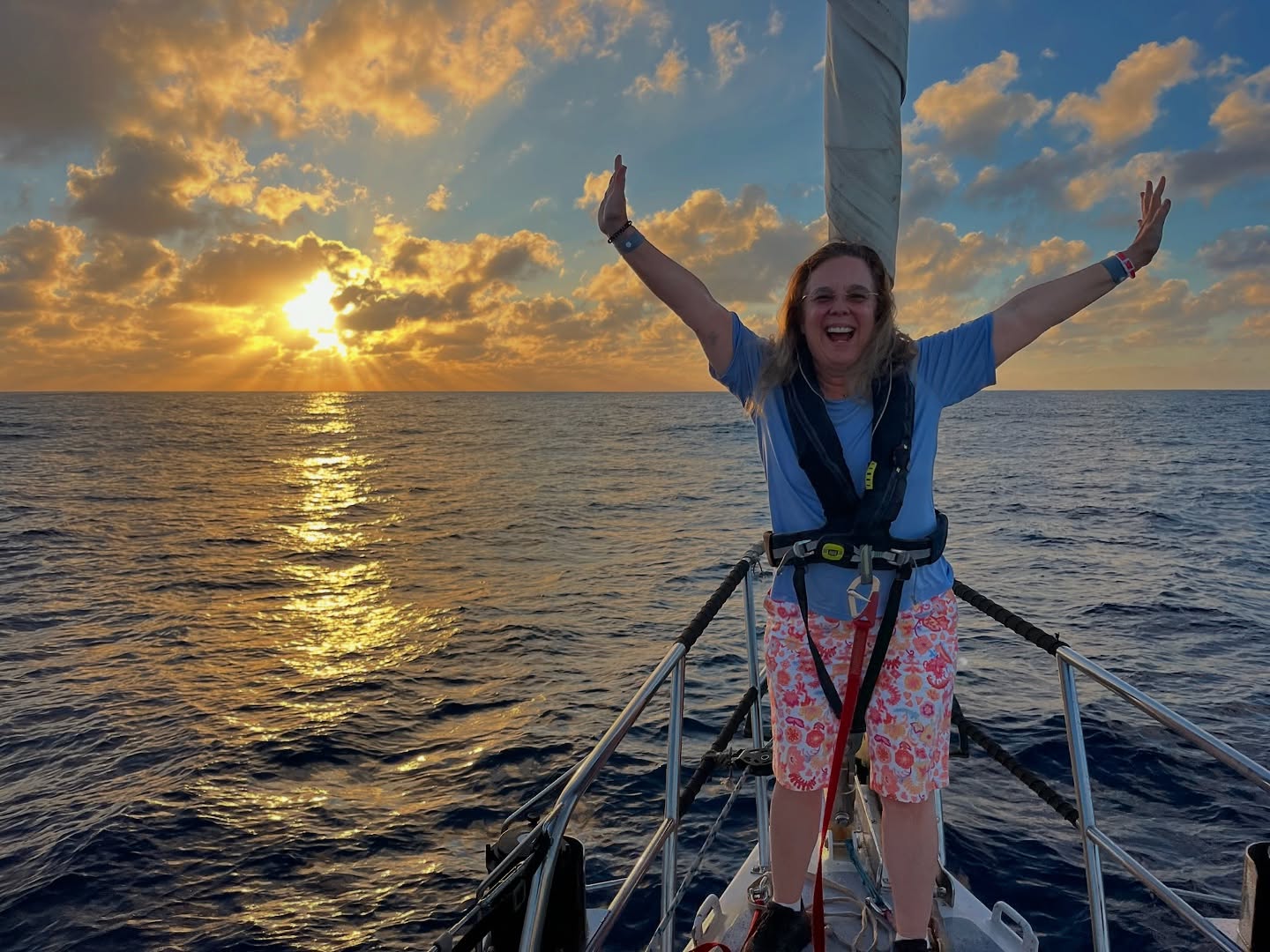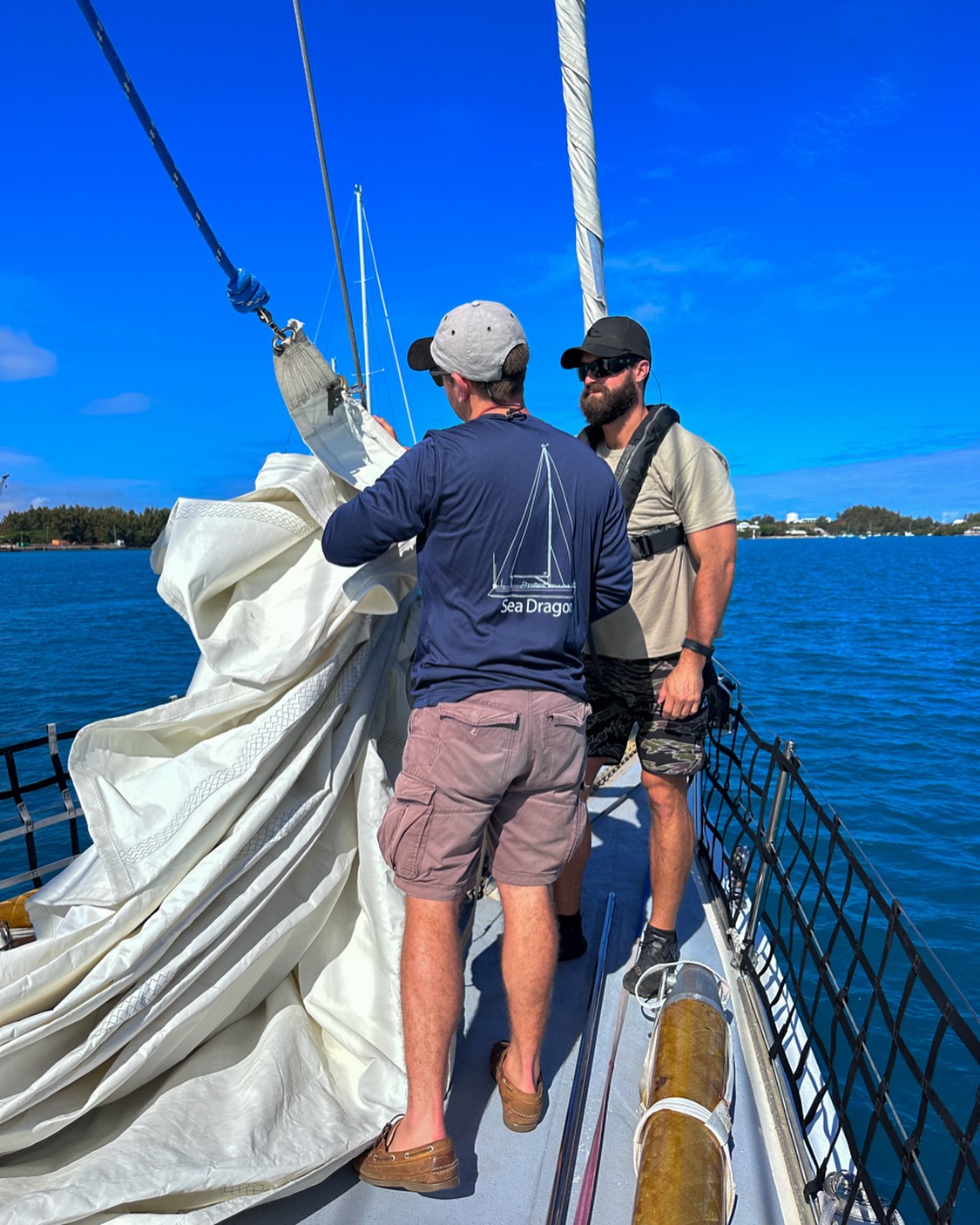So long and thanks for all the fish.
by Charlie Triggs – Deckhand aboard Sea Dragon.
For Shannon and I three months as deckhands on Sea Dragon are drawing to a close. We have sailed from Mexico to Hawaii, then onward to Kiribati, completed a circuit of the Phoenix Islands with Woods Hole Oceanographic Institution (WHOI), before a 1,150nm punch back upwind towards an erupting volcano. Time flies when you’re having fun and we’ve had an absolute blast with some incredible highlights and fantastic life experiences. Swimming with whale sharks in La Paz, ripping the mainsail on approach to Hawaii, being greeted by manta rays at Christmas Island, being greeted by the entire population of Kanton island, and setting foot on some of the most remote atolls in the Pacific. Writing this down seems like a plot to the next Swallows and Amazons sequel. We have been so lucky to be able to call this stuff our reality over the past three months. Some key moments from this trip will stay with me forever and are what make sailing, traveling and cultural experiences so special.
Kanton atoll is home to 54 I-Kiribati that come here on work contracts from the main island of Tarawa. A supply ship comes irregularly every few months, there is no money on the islands, and possessions are shared amongst the community. A couple of boats come to the island each year and it is definitely an event to be celebrated. Once anchored in the lagoon, all nine of us onboard Sea Dragon were invited for a meal. We arrived promptly at 17:00 to a tidy beach with a row of chairs facing a large tarpaulin mat covering the sand. We were welcomed and told to make ourselves at home while the preparations were finished. We playing volleyball, embarrassing ourselves in front of the locals. Children arrived on the back of the island’s flat bed trike, we kicked a football, made sandcastles, and spoke to the locals to find out more about their island. At 17:00 Kiribati time (around 19:00 boat time) the complete population of Kanton appeared to be present, we were invited to make ourselves comfortable on the nine chairs whilst the 54 people of Kanton sat on the tarpaulin mat staring at us. The children sang some well-rehearsed songs and the younger men did some traditional dancing, wearing palm leaf skirts, arm bands and flower crowns. There is a lack of younger women on the island, and so the men were playing both male and female rolls to the dances which was entertaining for everybody! It turned out the I-Kiribati like to dance, to fast paced electronic music of all things, and guests are expected to get involved. After three bouts of slightly painful dad dancing, with enthusiastic children and straight faced women, we tucked into our well earned coconut rice, freshly caught lobster, tuna and stuffed crab whilst drinking from coconuts. Despite feeling slightly uncomfortable dancing and eating on a chair in front of staring faces, whilst still covered in sand and regretting wearing a thick cotton shirt (its hot on the equator), it was a really fantastic evening. Once the festivities were over we were walked back to our dinghy. To cross a 50m channel of shark infested water we used the island ferry. A double bed sized piece of Styrofoam. Three people at a time were swam across by the locals who appeared immune to sharks, whilst we were all told to keep our feet out of the water. The I-Kiribati were so welcoming and giving to us, what they had they shared, and we got to experience such generosity and friendliness from complete strangers.
As well as being spoilt by our Kanton hosts, we have also been spoilt by some great wildlife during our time in the Phoenix Islands. Whilst the guys from WHOI were on the reef taking their coral cores we would have two dinghies and one person snorkelling at the surface. The snorkeler would catch empty dive tanks and send down full ones for the pneumatic drill. As well as being a great excuse to practice free diving, we got a chance to see some of the best coral reefs on the planet. Rawaki was the smallest island we visited and there was so much life. Hundreds of frigate birds spiralled upwards on thermals, looking like tornados over our heads, whilst boobies, turns and noddy’s dive bombed us at the surface. With your head under the waves there is a huge amount of fish and coral. A 5ft grey shark swam past the divers below, checking out all the bubbles. It made a U-turn directly below me then disappeared back into the blue. Possibly even more scary / awe-inspiring were the two Orca that Eric and Mike found whilst collecting a plankton sample. To see such a top predator being so inquisitive about us (safely on Sea Dragon at this point) was so exciting. It’s these moments with nature that make the biggest impression on me. However, the show of course must go on, and so the dives that afternoon were completed with a lot of checks over the shoulder!
Stepping foot on an uninhabited island is the closest I will ever feel to being a real life pirate. Unfortunately we did not find any treasure, but we did find a lot of rubbish. Twenty years ago the island of Orona had been used to produce copra from coconut trees. The wooden structures of the ruined buildings and wells were an eerie reminder of past civilisation, but this scene was dominated buy the amount of vodka bottles and beer cans that had been left behind. The reality that no place is untouched by man became even more apparent to me. Despite the rubbish, crabs had well and truly lay claim to the island. The building used to store copra was full of hermit crabs and the rest of the island covered in large holes. Once I’d seen the size of the crabs that lived in these holes I treaded much more carefully! Smaller crabs lined the shore, scuttling between the waves and a moray eel hiding in a rock pool.
Sea Dragon has been the best floating home for the last three months. It is great spending so much time on a boat and getting to know it so well. Whilst at the atolls during the WHOI research trip we would drift overnight. The reef surrounding the atolls are too shallow and close to the shore for anchoring, and off of the reef the sea bed drops to a few hundred metres of depth. So at night we would motor to the leeward side of the atoll, lash the wheel and turn the engine off. It is a great experience to be drifting and something I haven’t experienced before, as generally you’re moving with purpose when on a sailing boat! The first few nights were less relaxed, checking the chart plotter every ten seconds to make sure the 1 knot we were drifting was away from land. But once I was confident we were unlikely to crash into a reef I really enjoyed these nights. The boat finds its most comfortable position nestled in the waves and you can feel the swell and each wave lifting and lowering the boat from one corner to the other. In the early hours we would then start sailing or motoring back to the reef.
A quote is written above the chart table on Sea Dragon that made me feel at home and in good company the first day I arrived on the boat. It holds true and I thought it was specifically fitting whilst being adrift on those nights in the middle of the Pacific Ocean. “I am a citizen of the most beautiful nation on Earth, a nation who’s laws are harsh yet simple, a nation that never cheats, which is immense and without borders, where life is lived in the present. In this limitless nation, this nation of wind, light and peace, there is no other ruler besides the sea.” – Bernard Moitessier.
So thank you very much Sea Dragon. It has been a pleasure to sail with you, whilst meeting some great people and sharing so much passion and enthusiasm for the sea. Until next time – happy sailing!





















